Goffmania: description, care and reproduction, diseases

Goffmania is a very beautiful but capricious flower. It attracts gardeners with its beautiful corrugated leaves, which are adorned with a clear textural pattern.
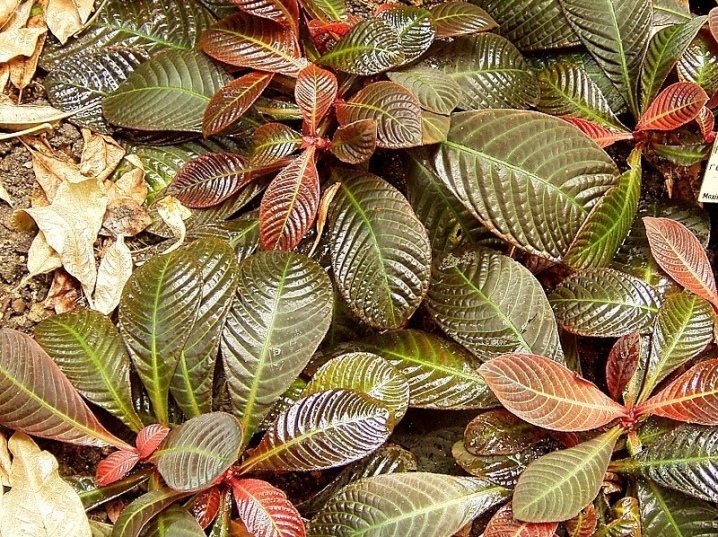
Peculiarities
Goffmania belongs to the Marenov family. The birthplace of the flower is South and Central America.
Leaves are the main decoration of this flower. They are dark green below and bright red above. The length of one sheet in some cases reaches 30 centimeters, and the width - up to 8 centimeters. Some of the species can form a rosette. In this case, young leaves are colored reddish.
Such indoor plants can be decorated with flowers, the shape of which resembles a star in its appearance. By themselves, they are small and mostly hidden under the leaves. Their color is most often yellow, and there is a small red spot in the middle.
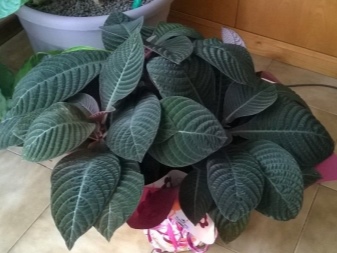
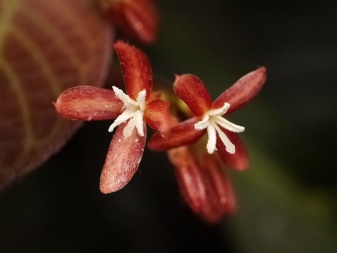
Views
Despite the variety of types of hoffmania, only a few are considered cultural.
Shining
Some gardeners call this type of hoffmania "glittering". In its shape, it resembles a low shrub, the height of which is within 30-60 centimeters. Its stems grow straight and are red in color. The length of satin leaves reaches 10 centimeters. The top of the leaves is olive green and the bottom is red. After a certain period of time, small inflorescences consisting of red flowers appear on this plant. They appear right on the surface of the trunk. The diameter of these flowers is 2.5 cm.
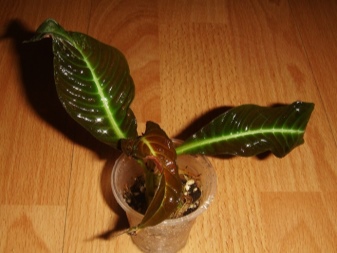
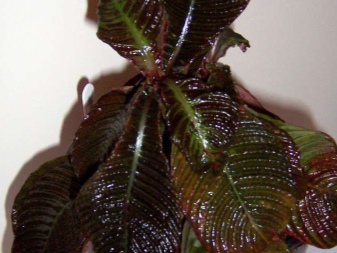
Velvet (Retzlya)
The height of the stems of this type of goffmania is 30 centimeters. They are quite fleshy, have four edges and a red tint. The velvety leaves of this flower are slightly pointed from above, but slightly elongated at the base. Their length is 20 centimeters, and their width is 10 centimeters. The top of the leaves is olive green and the bottom is brownish red. The red flowers are collected in small cluster-like inflorescences.

Goffmania Gisbrecht
Another type of hoffmania, which is in the form of a bush. Its velvety leaves are large enough and have a bright green tint on top. They are pink underneath. The flowers are also star-shaped. Most often, such a plant is grown in greenhouses.
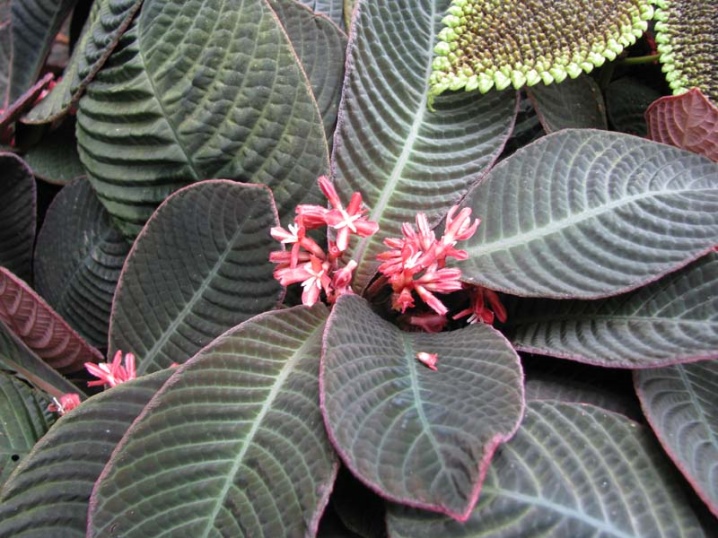
Care
Goffmania is a tropical plant, so it requires special conditions for keeping. Otherwise, the culture may lose its attractiveness. First of all, the flower must be placed correctly. A winter garden, a small greenhouse, and even an indoor greenhouse are suitable for this.
In any case, the place should be well lit, and the light diffused. The flower must be protected from direct sunlight and drafts.
Also, heating devices should not be placed nearby so that the air does not dry out too much.
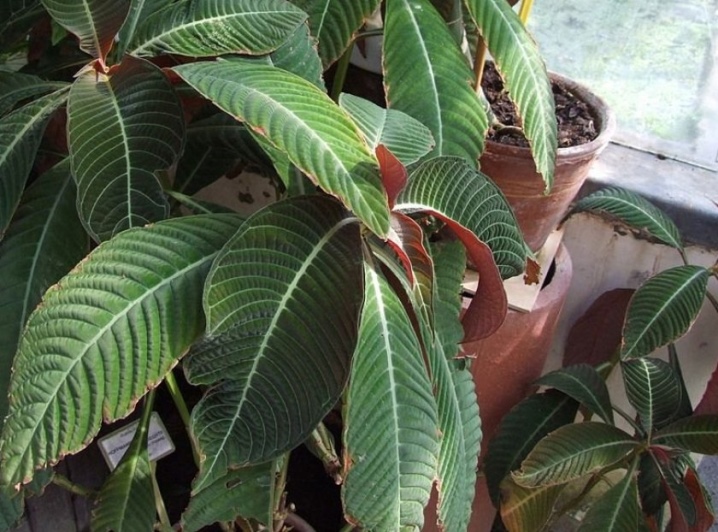
But there are other things to keep in mind as well.
- Temperature conditions. In order to keep a flower at home, it is important to maintain a high temperature in the room. In the event that the temperature drops below 18 degrees, Hoffmania falls into stress. The plant immediately loses its attractiveness.
- Watering. Since Hoffmania is a fairly moisture-loving flower, it will need regular watering at home. In the event that the apartment has low enough humidity, the plant will have to be regularly sprayed with boiled warm water. This is necessary in order to get rid of sedimentary salts. You can also place the flower on a pallet filled with pebbles.In this case, water will constantly flow to the roots of the plant. In no case should the substrate completely dry out or waterlogging - this will damage goffmania.
- Top dressing. This process is essential for any plant. This flower is best fed when the active growing season begins, that is, in early May and September. It is best to use liquid dressings once a week. Both organic and chemical fertilizers are suitable for this.
- Pruning. This flower grows too quickly in the summer, and in the winter it actively begins to shed its leaves. As a result, he may lose his attractiveness. To prevent this from happening, it will be necessary to do active cutting of bare trunks in early March. Cut stems allow new shoots to grow. In addition, in order to stimulate the formation of a dense top, all new shoots must be pinched.
- Transfer. The plant will need it once every 2 years. It is best to replant the flower in late February or early March. The pot must be several centimeters wider than the previous one. A drainage layer must be laid on its bottom so that moisture does not stagnate. For this, both pebbles and expanded clay are suitable. After that, you need to prepare a substrate, which will consist of 1 part of river sand, 1 part of peat and 1 part of deciduous humus. After the goffmania is installed in a new flowerpot, you need to fill in all the voids around the flower. Then it must be watered.


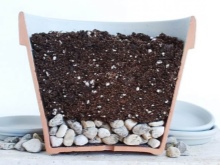
Reproduction
There are several ways to reproduce such a beautiful flower.
Cuttings
After pruning the goffmania, there are always branches left. Among them, it is worth choosing those that have 3 internodes and a length of up to 8-10 centimeters. They must be placed in the stimulating solution for rootlets to appear. After the cuttings, they must be carefully planted in a mixture of sand and peat, taken in equal parts. From above, the container must be covered with either a film or glass, and then put in a warm and well-humid place. The temperature should not be lower than 22 degrees.
When the first leaves appear on the stems, they can be transplanted into separate flowerpots, and also moved to a place where there is more light.
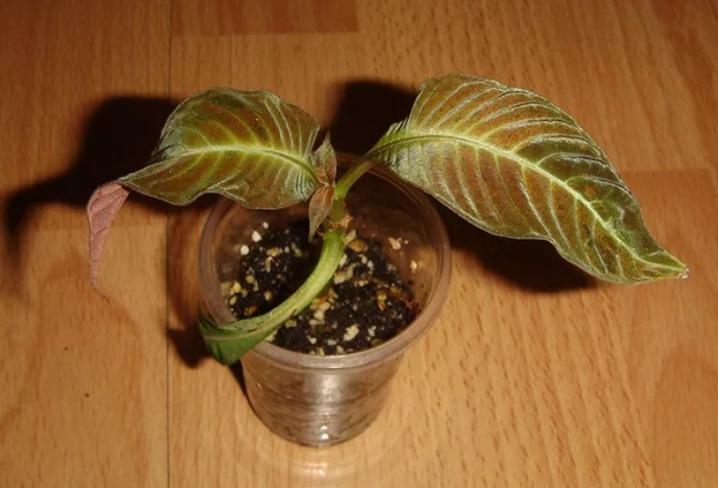
Children
In the event that the goffmania has root sockets, you can use the "babies" that have settled near the mother bush for reproduction. They are already fully formed, respectively, they have roots and leaves. This will allow them to quickly settle down in a new place.
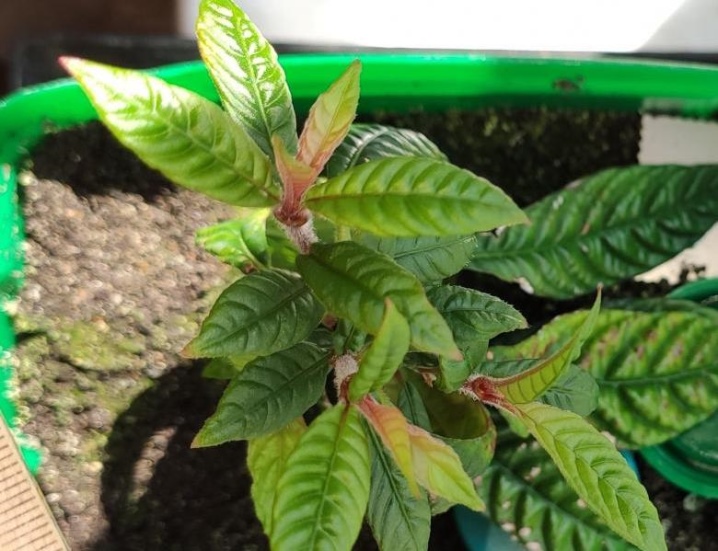
Diseases and pests
Improper care of Hoffmania can lead to the appearance of various diseases. Among them, the following problems are worth noting.
- Withering of a flower. It happens if the house is too cool or the plant has received insufficient moisture. In this case, it is necessary either to increase the temperature in the room, or to carry out the correct watering.
- Decay of the root system, as well as the stems. Most often this happens when the soil is excessively wet. To prevent this from happening, watering must be carried out correctly.
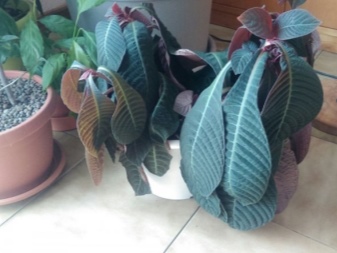
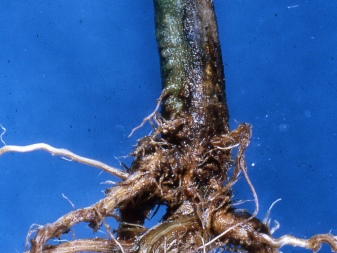
Weakened plants are more often than others exposed to the appearance of pests, which must be dealt with in one way or another.
- Spider mite. He feeds on the sap of the plant, after which his leaves begin to wilt, and then completely fall off. To combat such insects, special insecticides must be used. Such drugs as "Aktara" or "Actellic" are perfect. In case of severe damage, re-spraying will be required.
- Aphid. Like previous insects, aphids feed on plant sap. It settles on the lower part of the leaves, sometimes setting up whole colonies there. It is also worth using chemicals to fight. After processing, the flower will delight everyone with its beauty, as before.
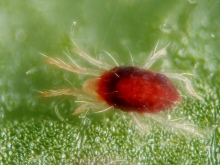
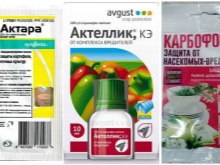

To summarize, we can say that Hoffmania is a wonderful plant that will become an ornament in any home, but only if it is properly and regularly looked after.
See below for the care and maintenance of indoor plants.































The comment was sent successfully.